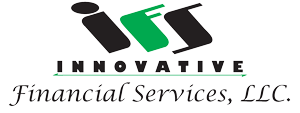Native advertising refers to an ad that blends in well with the platform content around it. It usually consists of content that is educational and valuable for the reader. Common examples include:
Paid social media ads that are delivered in the newsfeed so that they look like any other post. These will be marked “Sponsored” or “Promoted.”
Articles included in a magazine or newspaper. These will be labeled “Sponsored Content.” You might also have seen them called advertorials or special advertising sections. In the case of the latter, several companies might go in together to create content on a particular topic.
Promoted search results. These are paid search ads, which take many forms these days. You might see them listed as a regular listing labeled sponsored, promoted within a Google Map, or listed in a carousel of products, to name a few.
Recommendation blocks or widgets. These are headlined with “You might also like” or similar wording and are often used in store search results for upsell purposes.
Promoted listings. Ecommerce sites such as Amazon will use these. I’ll enter in a book author’s name I am searching for and other author’s books labeled promoted will appear in my search results.
Product placement, where you see a Coke can or Audi car in a movie, is a special form of native advertising.
Native advertising is incredibly common in the finance and tax profession. It has many benefits. One, the click-through rate is much higher than, say, a banner ad, because the reader feels like it should be there and it’s not as much of an interruption as a regular ad is. Second, we often need to educate our clients, and native advertising usually has a heavy educational content component to it.
In 2012, H&R Block hired The Onion (a satirical news site) to post a sponsored article with the title of “Woman Going to Take Quick Break After Filling Out Name, Address on Tax Forms.” This is a prime example of native advertising.
Almost all of the major news outlets benefit from native advertisers. CNN is especially full of paid and sponsored content; all you need to do is scroll the home page to see dozens of examples.
Native advertising can take the form of a social media post, an article, a video, or just about any content medium. Consumers look at native ads 53 percent more than display ads, according to Outbrain, and here are some more statistics when it comes to monetizing native advertising.
https://www.outbrain.com/blog/21-native-advertising-statistics-for-2021/
